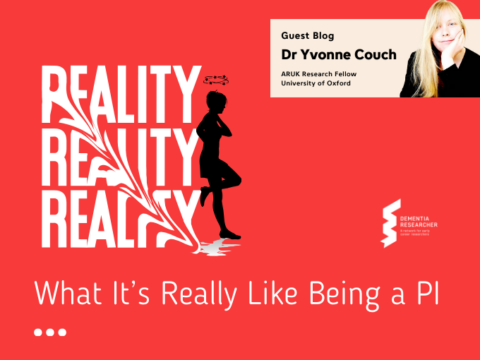One of the types of dementia I investigate in my research is Posterior Cortical Atrophy (PCA). PCA is also called the visual variant of Alzheimer´s disease (AD) because the syndrome is characterised by early and disabling visual difficulties and most (although not all) cases show underlying AD pathology. PCA is a young onset dementia, meaning most people with the condition present symptoms before the age of 65, typical in the 50s or early 60s.
Age at onset (AAO) is an important variable to study for dementia researchers because it is known to influence the clinical expression of AD. However, this important driving factor is currently under investigated in atypical forms of AD.
In the only study to date looking at the effect of AAO in PCA, my team and I proved that AAO also influences the clinical-anatomical expression of PCA. The impulse for this study came from the many patients with PCA I saw in clinic. When you spend many hours in clinical practice and see hundreds of patients over months and years, patterns begin to emerge (if you are a clinician, I am sure you know what I am talking about). I noticed that my younger patients with PCA seemed to show more focal symptoms at onset than older ones. For instance, those with earlier-onset PCA showing well-defined visual difficulties (accompanied by fair preservation of other functions), while those with later-onset PCA, seemed to show a pattern of visual breakdown less severe, in the context of additional diffuse cognitive impairment, vaguely resembling typical AD.
I shared this thought with clinical colleagues to find out whether they had also observed the same and I found many nodding heads as a response (how nice and needed is peer validation to ease self-insecurities?).
I wanted to know whether this subjective impression I had held true. So, I went on to test my hypothesis. With the help of Dr Manja Lehmann, and incredible scientist based at the DRC at the time, we pull together an international sample of 98 PCA. We looked at both imaging and clinical data and we investigated if the neuropsychological and radiological expression of the phenotype varied according to AAO (Suárez-González et al. Neurobiology of Aging, 2016).
Both neuropsychological and neuroimaging data were analysed using 2 different approaches to make sure that our results were robust and not biased by a specific type of analysis: first, we used AAO as a continuous variable and second, we also split the sample using the median age (58 years) as an arbitrary cut-off point.
We found that people with earlier-onset PCA (those PCA with very young AAO) showed lower cortical thickness in posterior regions compared to later-onset PCA (those with older AAO). We also found that later-onset PCA showed the opposite pattern, lower thickness in anterior and prefrontal areas, which was in keeping with our hypothesis.
When we looked at the neuropsychological scores, we did not find age-related differences in visual tests, but we did find them in tests sensitive to parietal dysfunction (digit span and calculation) associated with the angular gyrus and parieto-occipital sulcus in particular. These were the posterior regions where more difference was found between earlier and later PCA in the imaging analysis. Not only that, but running analysis using AAO as a continuous variable did not yield different results than using AAO as a dichotomous one, which indicated that our findings were unlikely due to the type of analysis approach. All these results were corrected by global cognitive impairment and disease duration.
Why are these results important?
They add knowledge that helps to understand a bit more about the heterogeneity of AD and to formulate hypothesis about the physiopathology of PCA: for instance, maybe the temporoparietooccipital junction is an area that holds greater pathological burden (e.g., Tau protein) in people with earlier onset PCA. If that is the case, why? is it driven by genetic factors?
These findings may also contribute to understand better the trajectories of disease: what does AAO mean for the disease trajectory? Are people with earlier PCA going to deteriorate faster, or perhaps not? Will they lose posterior cortical related abilities sooner than the later onset PCA group? And if that happens, will they compensate better because of spared anterior cognitive functions? Is there a different order of symptoms progression in earlier than later onset PCA then? These are very important questions to tailor rehabilitation, therapy, and support.
As you can see, the role of AAO has important implications for unravelling AD. I would like to see more research examining this variable in the coming years!

Dr Aida Suarez-Gonzalez
Author
Dr Aida Suarez-Gonzalez is a Clinical Neuropsychologist and Senior Researcher at the Dementia Research Centre, UCL Institute of Neurology at Queen Square. With many years clinical experience working in Spain, Aida now investigating non-pharmacological interventions, services and assistive technologies to support people living well with dementia.

 Print This Post
Print This Post





Hi, I have PCA, diagnosed at 58, the findings resonated with me; my visual functions are terrible. However my cognitive functions are much better than they should be compared to my physical ones even for typical PCA. This must be because I do a lot of academic research, working with academics, but at their level; this form of co production is the future, but is happening now in Scotland and has spread to the rest of the UK. My neurologist and neuropsychologist love me as I can explain why I am doing something, when others at that stage are not able to. So co production is a win win.